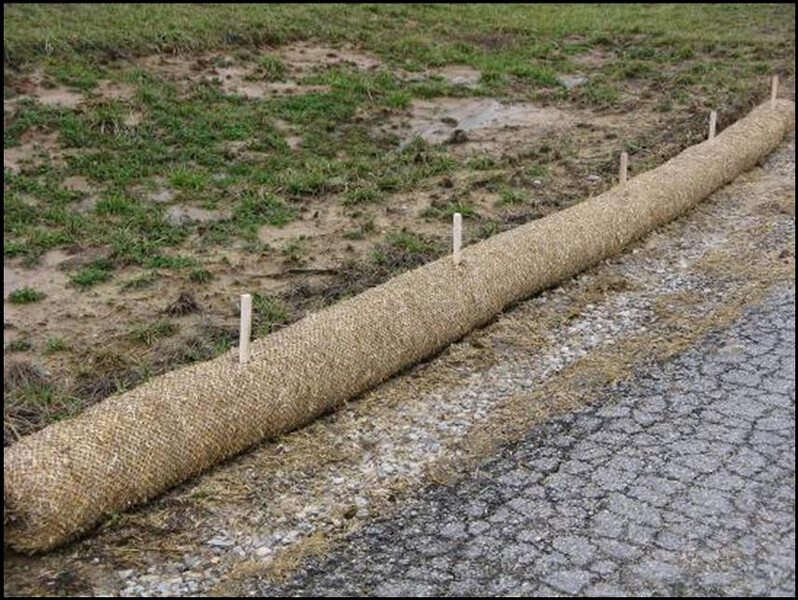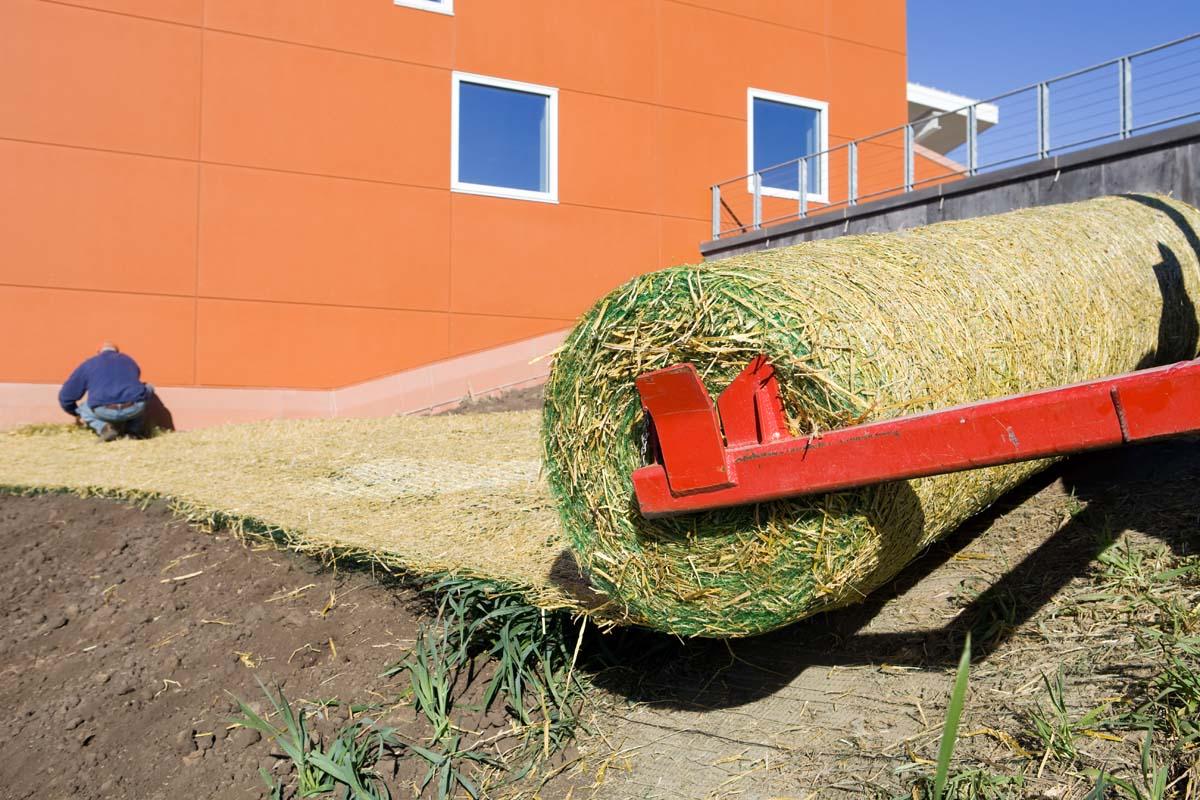Trusted Erosion Control: Memphis Erosion Control Solutions erosion control company
Wiki Article
Best Practices for Disintegration Control in Construction Projects
Are you servicing a construction task and concerned about erosion control? Look no further! In this short article, we will certainly assist you with the most effective techniques for protecting against disintegration on your website. You'll uncover 5 essential techniques, reliable sediment and runoff management techniques, essential considerations for slope stabilization, and tips for protecting vegetation and dirt. We'll additionally look into the value of carrying out appropriate drainage systems. Prepare yourself to take on erosion head-on and guarantee the success of your construction project.5 Important Disintegration Control Methods

To properly regulate disintegration on your building and construction website, you'll require to apply essential techniques such as slope stabilization and debris control procedures. Slope stabilization is important in stopping soil erosion on steep slopes. An additional reliable strategy is the usage of erosion control blankets or floor coverings, which are positioned on the incline and assistance maintain soil bits while allowing vegetation to grow.
Effective Debris and Overflow Administration

You can efficiently handle debris and drainage in your building and construction project by executing appropriate disintegration control actions. Debris and drainage management is essential to stop disintegration and secure the surrounding setting. One reliable action is the installment of silt fencings along the border of the building and construction website. These fencings aid to contain debris and stop it from entering close-by water bodies. An additional important method is the execution of disintegration control coverings or floor coverings. These coverings supply a safety layer on bare soil, decreasing the effect of rainfall and avoiding erosion. In addition, the usage of debris basins or debris catches can assist to capture debris and stop it from going into stormwater systems. Routine maintenance of these measures is important to guarantee their efficiency throughout the construction task. This consists of checking and cleaning up debris basins and routinely changing silt fences and erosion control coverings as needed. By implementing these disintegration control steps, you can effectively take care of sediment and drainage in your building project, decreasing the influence on the environment and following regulatory needs.
Secret Factors To Consider for Slope Stabilization
When considering slope stabilization, it is essential to assess the terrain and identify possible areas of instability. You need to very carefully examine the slope's attributes, such as its water drainage, angle, and composition patterns. Try to find indicators of erosion, such as exposed roots, cracks, or slumping soil. These indications can give you an idea of where stabilization steps may be essential.As soon as you have determined the unpredictable locations, you can begin implementing steps to support the incline. One usual approach is the use of preserving walls or terracing to develop a collection of flat steps, which can aid disperse the weight and stop further disintegration. An additional choice is to plant plants on the incline, as the roots can aid secure the soil and control erosion. Furthermore, installing disintegration control coverings or mats can offer immediate protection while plant life comes to be well established.
It's critical to regularly monitor the stabilized slopes to ensure their performance. Keep an eye out for any indicators of activity or erosion, and take instant activity if essential. Routine upkeep, such as inspecting and fixing any kind of damaged steps, is likewise important to ensure long-term stability.
Best Practices for Greenery and Dirt Protection
If essential,One effective way to shield plant life and soil on slopes is by regularly straight from the source checking for signs of erosion and taking prompt action. By being observant and positive, you can prevent additional damage and guarantee the security of the slope. Start by evaluating the incline for any type of indicators of disintegration, such as revealed origins, bare dirt spots, or sediment build-up near the bottom. It is essential to deal with the issue immediately if you discover any of these indicators. Implement erosion control actions such as mounting disintegration control blankets, mulching, and even creating maintaining walls if needed. In addition, growing vegetation can dramatically help in maintaining the soil. Pick indigenous plants that have deep root systems, as they are much more effective in avoiding disintegration. Make sure to regularly examine the health of the greenery and give essential upkeep, like watering and fertilizing. Bear in mind, disintegration can promptly worsen and create extreme damages, so it's important to address it asap. By taking proactive procedures and frequently keeping track of the slope, you can protect the vegetation and dirt, guaranteeing the long-lasting stability of the location.Implementing Correct Drain Equipments
To properly apply proper water drainage more helpful hints systems, it's critical to take into consideration the slope gradient and soil type. When it involves taking care of water flow and preventing erosion, comprehending these elements is essential. The slope gradient plays a considerable duty in identifying just how water crosses the land. Steeper slopes can result in quicker water flow, raising the threat of disintegration and flooding. On the various other hand, gentler slopes allow water to move more slowly, minimizing disintegration capacity. By evaluating the slope gradient, you can develop an effective drain system that accommodates the all-natural water activity.Soil type likewise influences water drainage system style. Different soil types have differing degrees of permeability, impacting how water is soaked up and drained pipes. For circumstances, sandy soils tend to drain pipes faster as a result of their coarse texture, while clay dirts have a slower drain rate because of their portable nature. Comprehending the soil kind assists in picking ideal drain techniques, such as making use of permeable products or installing French drains pipes. Furthermore, considering the dirt attributes helps avoid waterlogging, which can bring about inadequate plant growth and damages to structures.
Verdict
In conclusion, when it comes to erosion control in construction projects, you should follow these finest methods. Think about slope stablizing methods to guarantee the stability of the browse around this web-site website. By adhering to these crucial methods, you can properly regulate erosion and guarantee the success of your construction task.To successfully regulate erosion on your construction website, you'll require to implement essential techniques such as incline stabilization and sediment control procedures. Slope stabilization is critical in preventing dirt disintegration on high inclines. An additional effective strategy is the use of disintegration control blankets or mats, which are placed on the incline and assistance maintain dirt fragments while allowing plants to expand. Another option is to grow vegetation on the slope, as the origins can assist secure the soil and control disintegration. Implement erosion control steps such as mounting disintegration control blankets, mulching, or also constructing retaining wall surfaces if required.
Report this wiki page